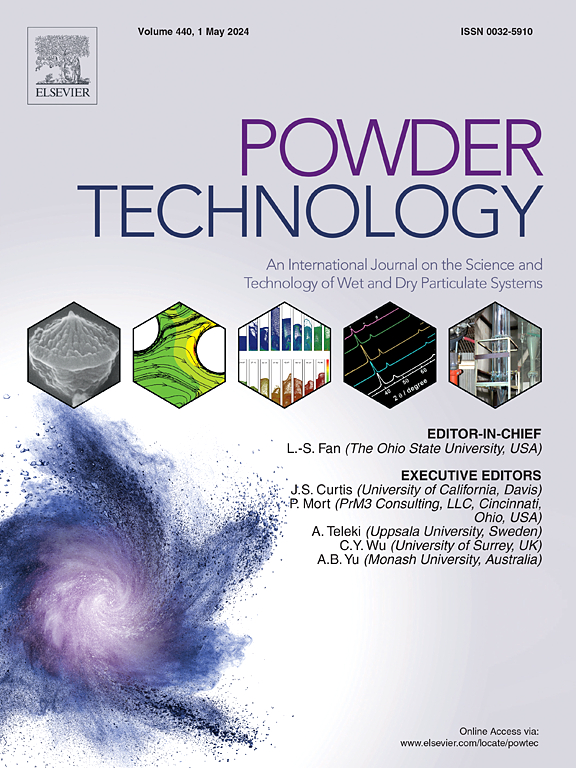Abrasive breakage characteristics and prediction in abrasive water jets within nozzle internals
IF 4.5
2区 工程技术
Q2 ENGINEERING, CHEMICAL
引用次数: 0
Abstract
Abrasive water jets cutting is widely utilized in various mechanical cutting industries, with abrasive recycling gaining significant attention due to the high costs associated with abrasives. Understanding the breakage characteristics of abrasives and accurately predicting abrasive breakage are essential for improving the efficiency of abrasive recycling. This study observed abrasive breakage characteristics before impact through experiments and proposed a Split Hopkinson Pressure Bar (SHPB)-assisted numerical model to predict abrasive breakage characteristics. Experimental results revealed a 14.1 % reduction in abrasive particle size without changes in the distribution function. The breakage resulted in smoother and more elongated particles and the model successfully replicated realistic abrasive size distribution for abrasive collision and subsequent breakages. Numerical findings indicated that abrasive collisions occur in both the convergent and tangential sections of the nozzle. Significantly, it has been observed that the majority of breakage occurs within the nozzle's tangential section, and this is governed by both collision dynamics and high-velocity flow. The findings of this study offer a foundational basis for the recycling of abrasive and the conceptualization of nozzle designs.

求助全文
约1分钟内获得全文
求助全文
来源期刊

Powder Technology
工程技术-工程:化工
CiteScore
9.90
自引率
15.40%
发文量
1047
审稿时长
46 days
期刊介绍:
Powder Technology is an International Journal on the Science and Technology of Wet and Dry Particulate Systems. Powder Technology publishes papers on all aspects of the formation of particles and their characterisation and on the study of systems containing particulate solids. No limitation is imposed on the size of the particles, which may range from nanometre scale, as in pigments or aerosols, to that of mined or quarried materials. The following list of topics is not intended to be comprehensive, but rather to indicate typical subjects which fall within the scope of the journal's interests:
Formation and synthesis of particles by precipitation and other methods.
Modification of particles by agglomeration, coating, comminution and attrition.
Characterisation of the size, shape, surface area, pore structure and strength of particles and agglomerates (including the origins and effects of inter particle forces).
Packing, failure, flow and permeability of assemblies of particles.
Particle-particle interactions and suspension rheology.
Handling and processing operations such as slurry flow, fluidization, pneumatic conveying.
Interactions between particles and their environment, including delivery of particulate products to the body.
Applications of particle technology in production of pharmaceuticals, chemicals, foods, pigments, structural, and functional materials and in environmental and energy related matters.
For materials-oriented contributions we are looking for articles revealing the effect of particle/powder characteristics (size, morphology and composition, in that order) on material performance or functionality and, ideally, comparison to any industrial standard.
 求助内容:
求助内容: 应助结果提醒方式:
应助结果提醒方式:


